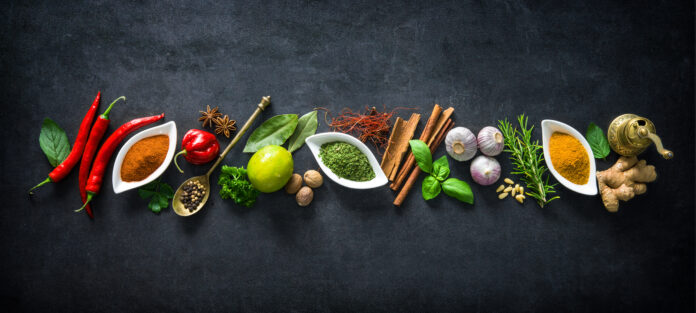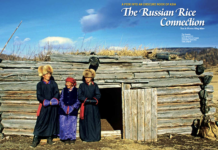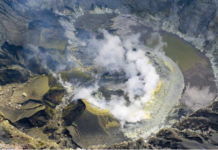Text by Khong Swee Lin
Images from Shutterstock
Let’s explore the shared history between people and herbs in Southeast Asia, in which many countries share the common denominator of healing plants.
1. CORIANDER
HISTORY
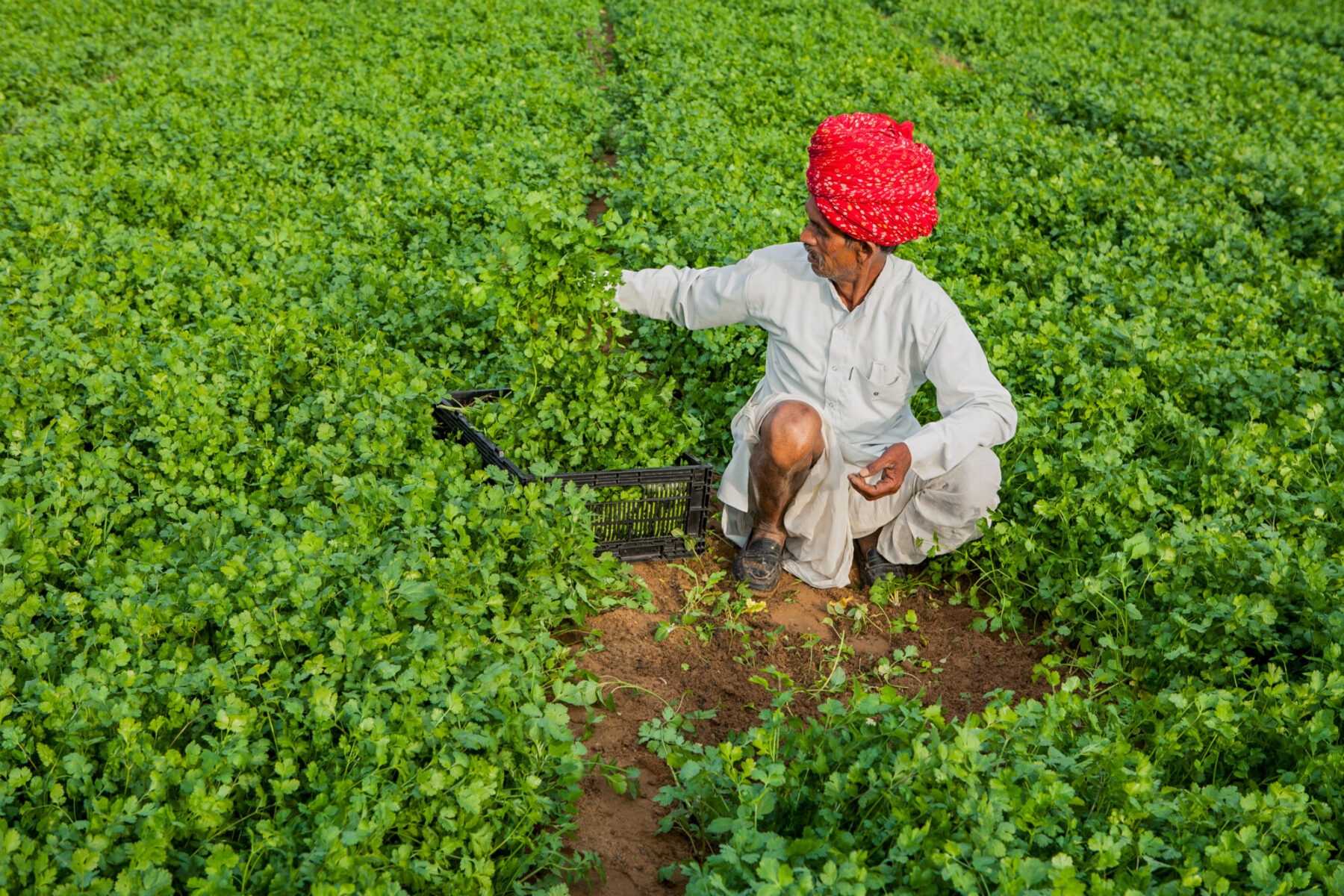
Coriander was placed in King Tutankhamen’s tomb for his use in the afterlife. The Babylonians enjoyed utilising coriander in their cuisine, recording recipes on their cuneiform tablets. A clay tablet of Babylonian King Merodach-Baladan II (r. 722–710 BCE) listed plants grown in his royal garden, including coriander. Essential oils, including oil from coriander, were produced by the ancient Persians, who once controlled the perfume trade.
The Capitularies of Charlemagne – the first Holy Roman Emperor – included a decree listing plants grown on this keen gardener’s royal estates; among them was coriander. Whether grown wild or domestically sown, coriander had cast its spell on the Anatolian region, the Levant, Egypt, Persia, and Greece. Ultimately, the Romans brought it from Egypt into southern Europe, using it as a preservative and flavouring.
German anthropologist Berthold Laufer suggests that one of the Chinese names for coriander, ho sui, could be a transcription of one form of the Persian name for coriander, known as koswi. Ancient Indian Ayurvedic medicine recognises coriander for its medicinal properties in relieving flatulence, spasms, and other digestive issues. Early Sanskrit writings mention coriander, and according to Laufer, the Sanskrit word for coriander, kustumburu, is of Iranian origin and probably arrived in India in a similar fashion to how it entered China, possibly around the 5th century CE.
USES

Traditional Chinese Medicine (TCM) regards the coriander plant as “warming”, helping to rid the body of disease in the upper respiratory tract, eyes, ears, nose, throat, and skin. In the ancient practice of acupuncture, coriander concerns the stomach and lung meridians. TCM practitioners use coriander to deal with rashes, coughs, and to reduce phlegm, as well as treat measles and diabetes. It also serves as a detoxifier and promotes the circulation of qi, the vital life force flowing through the body.
Very much a mainstay of Indian cuisine and herbalism, coriander is cultivated in all states in India. Interestingly, traditional Indian medicine also uses coriander to treat type 2 diabetes; it is the seeds that manage blood sugar levels. In Thailand, coriander roots are used to treat chickenpox, while its stems may induce perspiration and heal haemorrhoids. Phak chee, the Thai term for coriander, also relieves cough, stomach ache, and nausea. Traditional Indonesian medicine highly values the coriander plant, especially in the treatment of diabetes. A study published in April 2018 in the International Journal of Pharmaceutical and Phytopharmacological Research records antidiabetic activity in coriander leaves’ ethanolic extract. This is interesting, as previously, it was the seeds that were used to lower blood sugar levels.
2. LEMONGRASS
HISTORY
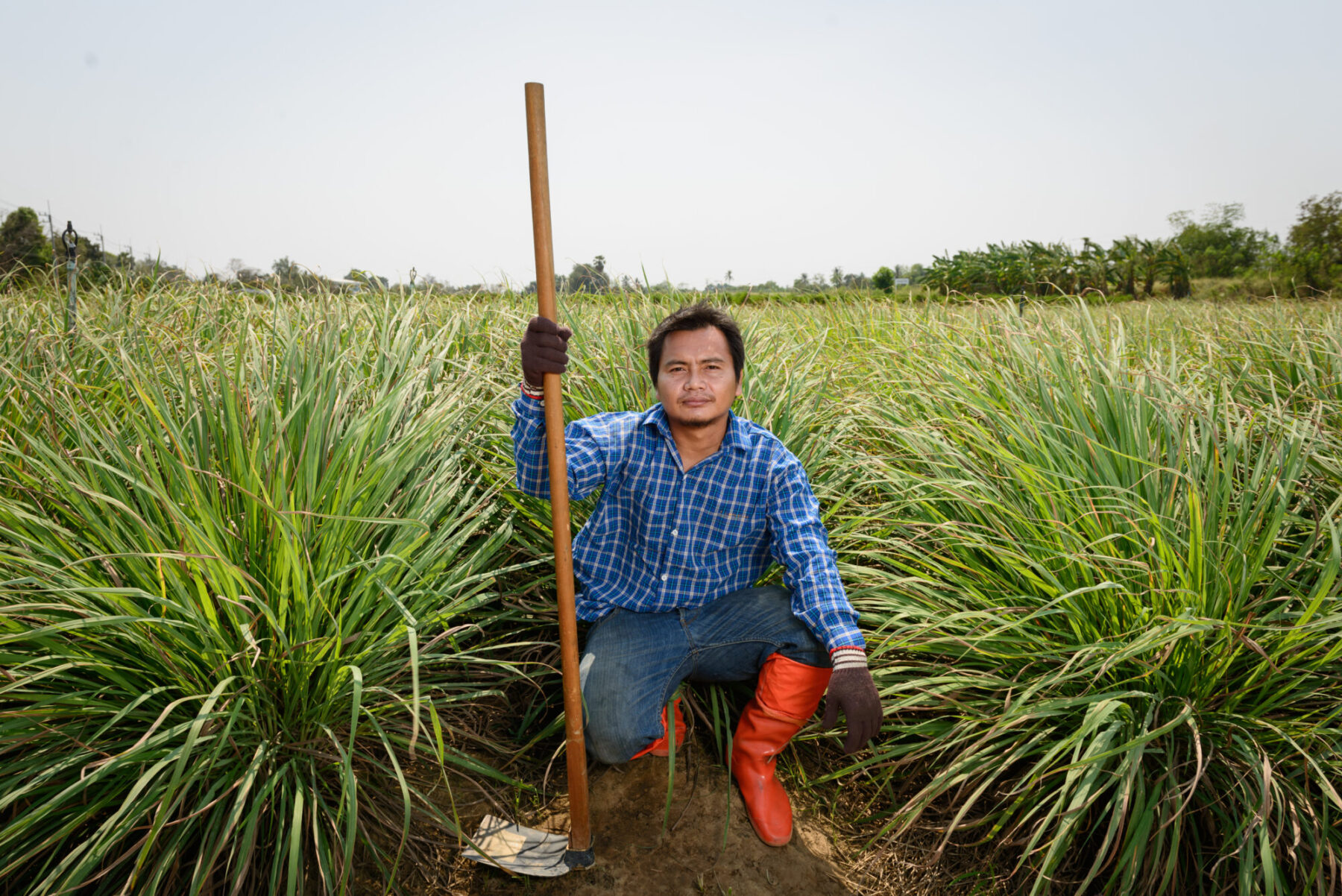
Commonly called lemongrass, Cymbopogon citratus is a tropical plant belonging to the grass family. Also known as sereh/serai (Indonesian/Malay), cong sa (Vietnamese), tanglad (Tagalog), takhrai (Thai), hua sing kai (Lao), krey (Khmer), sa pa ling (Burmese), and du’ut morin (Tetum), it is truly an ASEAN herb.
Looking like tall grass with long, thin, drooping leaves called spathes, lemongrass has been a companion not only in the kitchen but also as a herbal medicine for over 5,000 years. Introduced across South Asia in pre-colonial times, and to South and Central America after World War I, lemongrass has now been naturalised throughout the tropics and subtropics.
USES

Lemongrass contains about 70 percent citral, an aromatic compound giving lemongrass its typical lemony scent as well as antibacterial, antifungal, and antimicrobial properties. Rich in flavonoids, a form of natural antioxidant, lemongrass could also help fight inflammation, while the geraniol in the herb’s essential oil repels insects. Lemongrass also reduces levels of uric acid and cholesterol and aids in the detoxification of the liver and kidneys. Its diuretic effect keeps the digestive system in order. Citral also has anticancer effects, reduces fever and helps in controlling diabetes by maintaining appropriate levels of insulin. It also helps to promote sleep, as it has sedative properties. Packed with antioxidants, flavonoids and phenolic compounds, all beneficial to the human body, it’s also a source of vitamins and minerals.
Researchers investigating a village in southern Malaysia learnt that lemongrass was used by the villagers to treat certain postnatal conditions besides disorders such as flatulence and fever. In Laos, the herb is used to relieve colds and intestinal issues, just as it is in Thailand. Lemongrass is a common herb in the Philippines, and its roots and leaves are used as a diuretic and diaphoretic (to induce sweating). And across the seas in East Timor, it helps as a detoxifying agent.
3. LEPROUS LIME
HISTORY
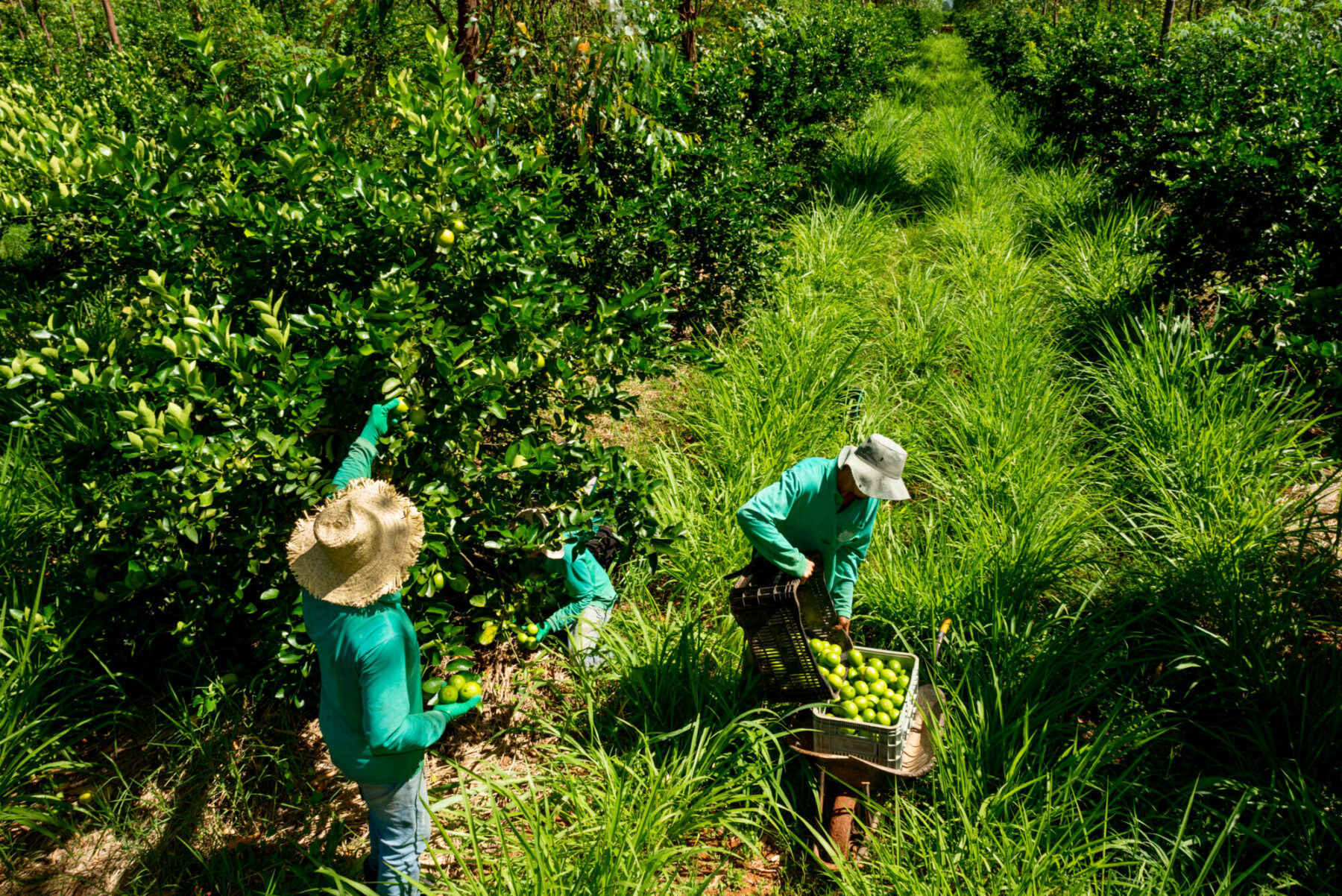
Native to Southeast Asia and South China, the leprous lime, with its shiny dark green leaves, is best known as the mainstay of Southeast Asian cuisines. Limau purut in Malay simply translates to “roughskinned lime”. In Malay, it is also known as jeruk purut. In other regions of Southeast Asia, leprous lime is known as shauk-nu (Myanmarese), krauch soeuch (Khmer), swangi (Philippines), and makrut (Thai). Limau purut proved its worth in amu treatments in Indonesia. The fruit worked alongside other herbs including lemongrass and was taken as decoctions, or in herbal baths to help in the healing process after birth.
USES
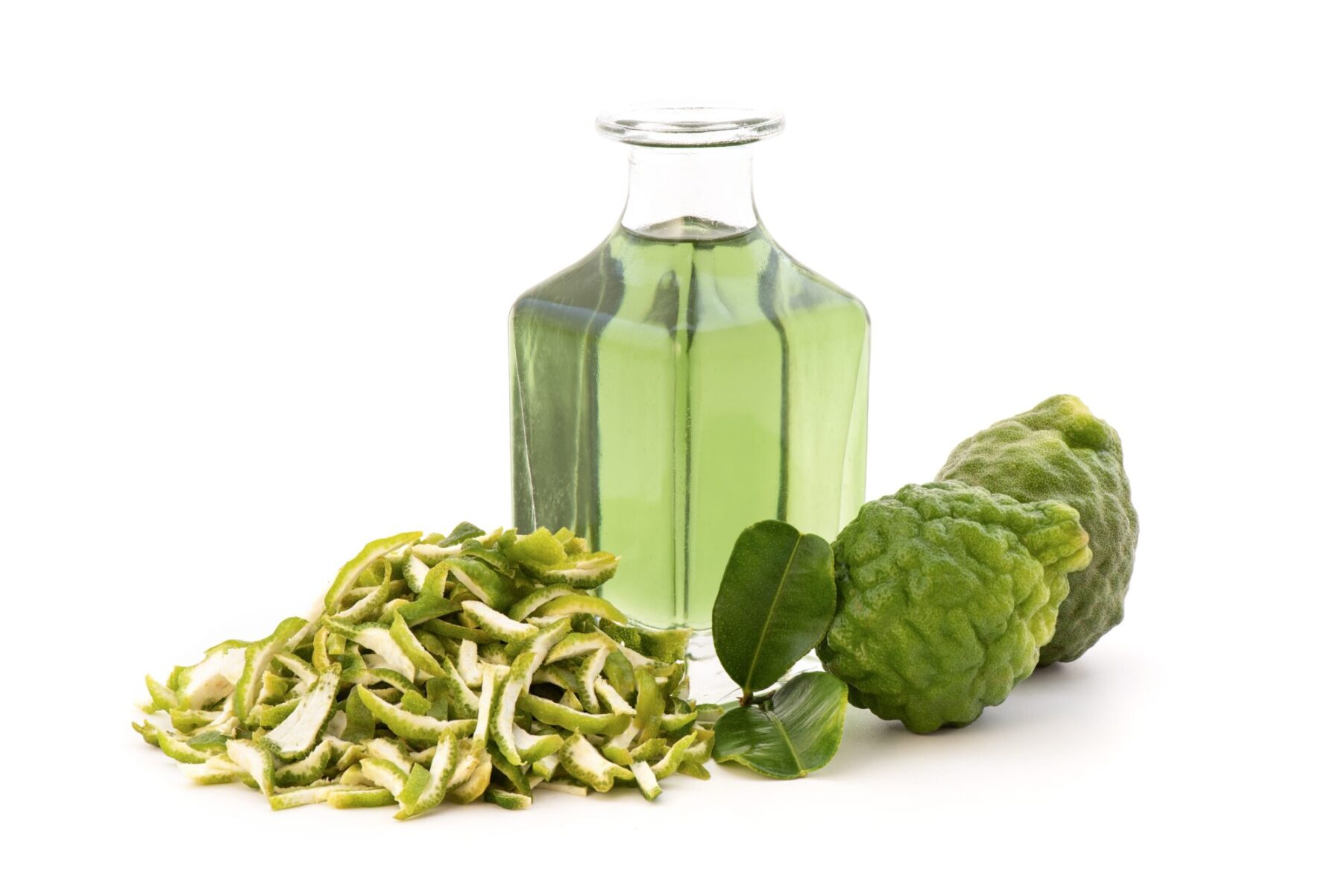
Researchers have found that the essential oil of the leprous lime extracted from its peels and leaves may inhibit certain bacteria. We also know that the terpenes, or natural chemical compounds, in this “warty” lime’s oil, citronellal and limonenes, have antioxidant properties that slow down the breakdown of cells, protecting the cardiovascular system from damage by free radicals. The leprous lime’s fruit and leaves, which provide its essential tang and scent, are made up of active compounds including vitamin C, potent flavonoids, and coumarins. Flavonoids may act as antioxidants while coumarins have anti inflammatory effects. Nervous disorders may be soothed by its essential oils, the juice may relieve digestive ailments, and the potent flavonoids may protect the heart.
None of this will come as a surprise to adherents of traditional medicine in Southeast Asia. As with lemongrass, this knobbly-skinned lime relieves inflammation whether by using the leaves, oil or juice on affected areas or simply ingesting the juice and fruit (with some honey to make it palatable). It also aids digestion, helps clear up constipation, and together with other products, detoxifies the blood, and boosts immunity. Many use it to relieve headaches, stress, fatigue and even the flu.
A staple in many Southeast Asian gardens, it’s also a useful plant to attract the chequered swallowtail, or the attractive common lime butterfly (Papilio demoleus malayanus), to lay eggs onto the leaves, one egg per leaf. Indeed, never fear while in the garden, for the mighty jeruk purut is not only a benevolent after-sun skin treatment but also an excellent insect repellent. Its limonene and citronellol are almost anathemas to mosquitoes and crawlies.
A very important part of baby care is urut bayi, literally “baby massage” in Malay, a traditional and age-old massage treatment for babies. Commenced after bath time, the baby is massaged for roughly 10 minutes using coconut oil. The session continues with an application of a mix of traditional herbs (including leprous lime), in the form of a warm compress, applied onto the baby’s entire body, excluding the head. To complete the routine, the baby is wrapped in a cotton binder to keep warm. This practice helps to ensure good digestion and protection from colic.
4. BLUE PEA FLOWER
HISTORY

Over half a century ago, certain estates in Singapore were once the preserves of gambier, pepper, nutmeg, coconut, and lemongrass. It was not uncommon to pass by sweeps of blue pea flowers’ lush foliage protecting sprawling compounds through which spacious verandahs of once-congenial abodes could be discerned. Bunga telang, or eagle flowers (bunga elang in Indonesian and Malay), is probably one of the most underrated herbs.
The striking sapphire hue of the bunga telang, otherwise known as the butterfly pea flower, is its metier. Georg Eberhard Rumphius, a German naturalist known as “the blind seer of Ambon” who was employed by the Dutch East India Company, described the flower as “having other names that are rather immodest” in his plant catalogue Herbarium Amboinense, published in 1750. It is thought that he came to this conclusion after hearing of local colloquialisms for the flower.
USES
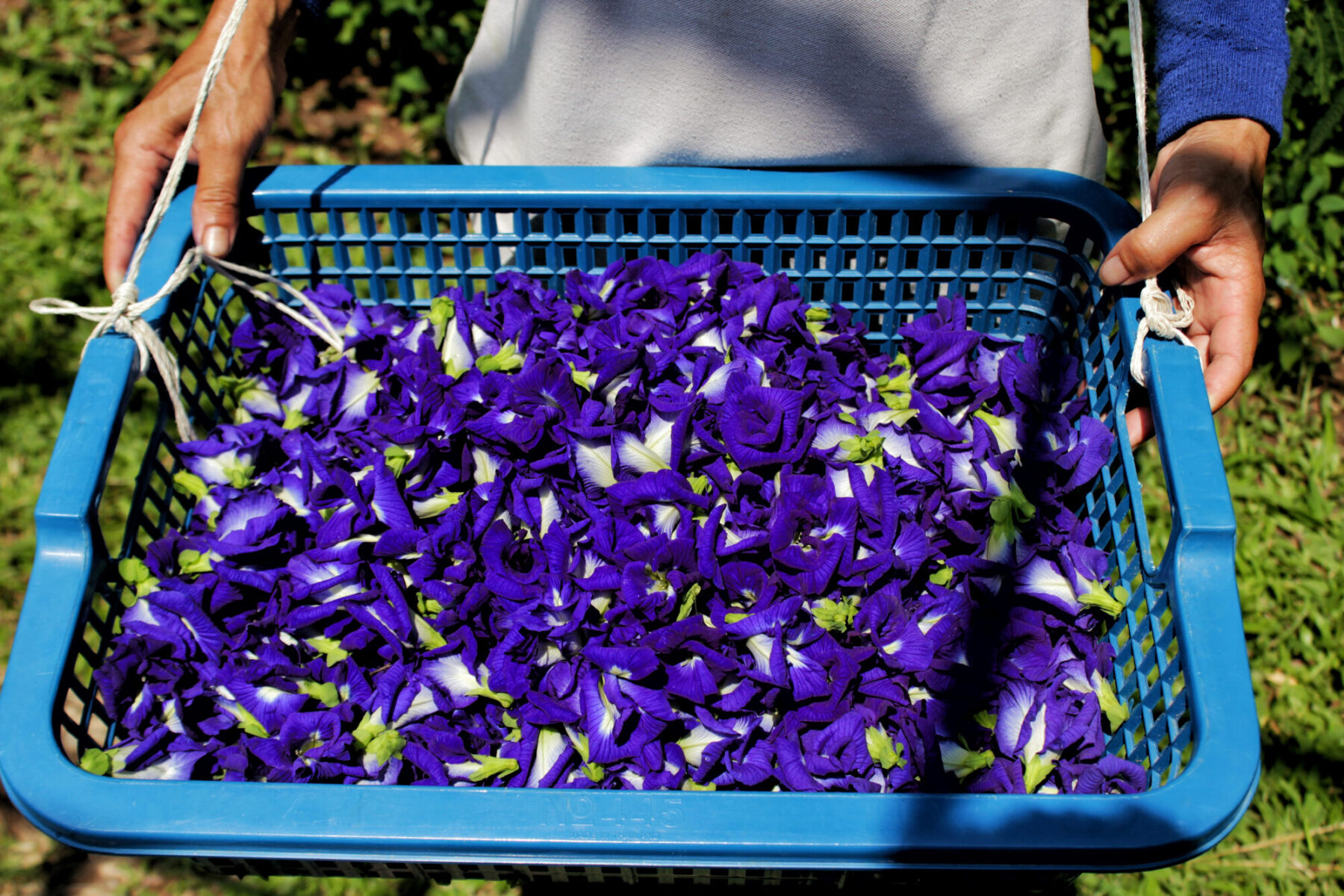
So familiar is the blue pea flower to the Indonesian, Malay, Straits-born Chinese and Chetty Melakan communities in the region that their shared cakes kueh seri muka or pulut inti wouldn’t be recognisable without their distinctive blue-speckled layers. The same can be said for the herbed rice nasi kerabu from Kelantan, Malaysia.
Called sangupushpam in Tamil, or “shell flower”, the blue pea flower has long been used in traditional Indian herbal remedies, a sacred plant in Ayurvedic medicine. The whole of aung-mae-nyo, as the herb is known in Burmese, is beneficial in Myanmarese traditional cures. The crushed leaves are placed on abscesses, while its root, roasted and mixed with water, can relieve inflammation of the liver or general oedema. Its bark may be purgative and diuretic. Its crushed flowers, mixed with milk, are often applied around infants’ sore eyes. And its seeds are believed to help stop hiccups!
Known as thua lai in Laos, its crushed seeds are a local antidote for scorpion and snake bites. Its petals are combined with other herbs such as mint or Asian pennywort for a healthy, nutritious raw salad, a dish known in cooler and mountainous northern Laos. In Khmer, it’s the “immortal flower”, often drunk as herbal tea, or even dipped in batter and fried. Its antipyretic and anti-inflammatory effects are wellknown in Cambodia, fighting depression or stress, and as a muscle relaxant. It may also be used to control diabetes. The dried petals are exported or sold online as an ingredient or powder, often by social enterprises supporting worthy Cambodian causes.
Pukingan, the Tagalog name for this vine, is applied for many pains including leaf poultices for swollen joints and a leaf-salt mixture for earache, rubbed around the ears. Meanwhile, West Javan herbal medical practitioners use kacang telang legume roots against headaches and as a purgative, the leaves for healing boils and coughs, the blooms for bronchitis and eye infections. Some eastern Indonesians also use them to clear abscesses.
In Eastern Indonesia, the liquid of the white variety of flowers is used for treating inflamed eyes. The leaves are used as poultices to heal boils. The cornucopia of folk remedies includes using blooms for hair tonics in Thailand.
5. CAJUPUT
HISTORY
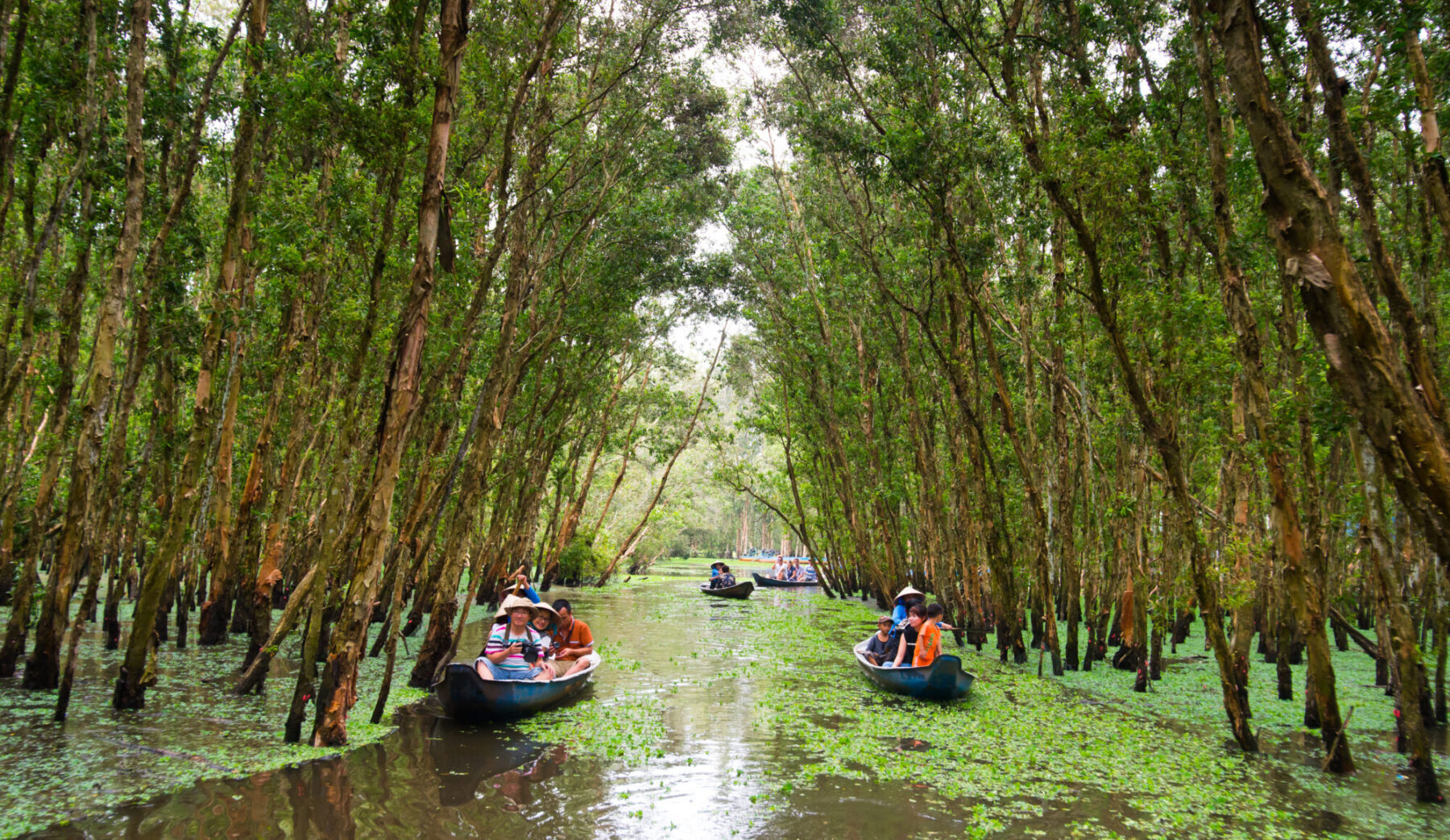
The vernacular name of Melaleuca cajuputi Powell was known to many before evolutionary theorist Alfred Russel Wallace trudged through the island of Buru, in the Maluku Islands of Indonesia, in 1861. It’s probable that the English name for the tree, cajeput or cajuput, is derived from or a corruption of the vernacular name kayu putih, meaning “white wood” in Indonesian, referring to the tone of its whitish bark.
The Melaleuca genus in the Myrtaceae family, richly endowed with approximately 260 species, is ever the survivor. It is said that the evolution of the genus began 38 million years ago, thriving even in harsh conditions. It has been found in the sandy coastal regions such as those of Vietnam, in wetlands such as Malaysia’s Setiu Wetlands in Terengganu, and in swamps like Singapore’s Kampong Gelam in the 1820s.
The secret of kayu putih is unlocked by steam distillation of its leaves and twigs. Harvesting is done only when the weather is extremely hot and dry, for the maximum quantity of oils to be obtained. No surprise that it’s native to northern Australia, Papua, Indonesia, Malaysia, Singapore, Thailand, and Vietnam – the leading producers of this essential oil being Indonesia and Vietnam. After harvesting, the materials are pulverised and left to ferment overnight before steam distillation takes place. It’s estimated that 150 kilograms of leaf materials produce about 1.5 kilograms of essential oil. Once common in Malaya, gelam, the Malay name for the tree, is extinct in wild Singapore, although it is seen in the wetlands at Seletar and Chek Jawa, as well as in Pasir Ris Mangroves Park, Jurong Lake Gardens, Admiralty Park, and Singapore Botanic Gardens.
USES

Minyak kayu putih, in Malay or Indonesian, and peck cha yew in Hokkien, two appellations for cajuput oil, evoke a host of childhood memories in many of us. Translated as “white wood oil” in both languages, the bottle was a standard fixture in medicine chests in regional homes. Often lacking identity, bereft of label or brand, the yellow-green oil, emitting a curious but comforting aroma of camphor, always rose to the occasion to allay a gamut of childhood complaints – simple tummy aches, colic, worms, toothaches, headaches, fevers, sinuses, sniffles, itch, mosquito bites, and bruised limbs. During the teenage years, it proved invaluable for after-sports sore muscles and cramps.
The entire gelam tree served us well and continues to serve. Its fire resistance means it is good for planting in peaty areas where fire is a major hazard. It offers its timber and bark for construction and fuel, and its leaves for our ills and services for the planet’s survival. It also offers its round capsules, pepper-like fruit with tiny seeds, which are not only ground for use as a flavouring agent or spice but employed in traditional Indonesian jamu treatments. In addition, the Myanmarese mix it with camphor against gout, Cambodians use the leaves for oedema, and Filipinos use it to treat asthma, besides relying on it for its antibacterial effects.
Its spiky-looking flowers attract bees, Atlas moth caterpillars, and birds (especially the olive-backed sunbird). The rainforest wild honey produced as a result of bees building hives on gelam trees has generally beneficial effects on humans. This honey may be obtained in the Malaysian state of Terengganu. It is believed that consumption of the product could delay the onset of chronic diseases and infections. Wild gelam mushrooms (Boletus spp), found in the coastal areas of Bachok, in the Malaysian state of Kelantan, are used both for food and as traditional medicine. Extracts or ingredients from Melaleuca have even found their way into skincare products sold in countries such as Singapore.
6. TAMARIND
HISTORY
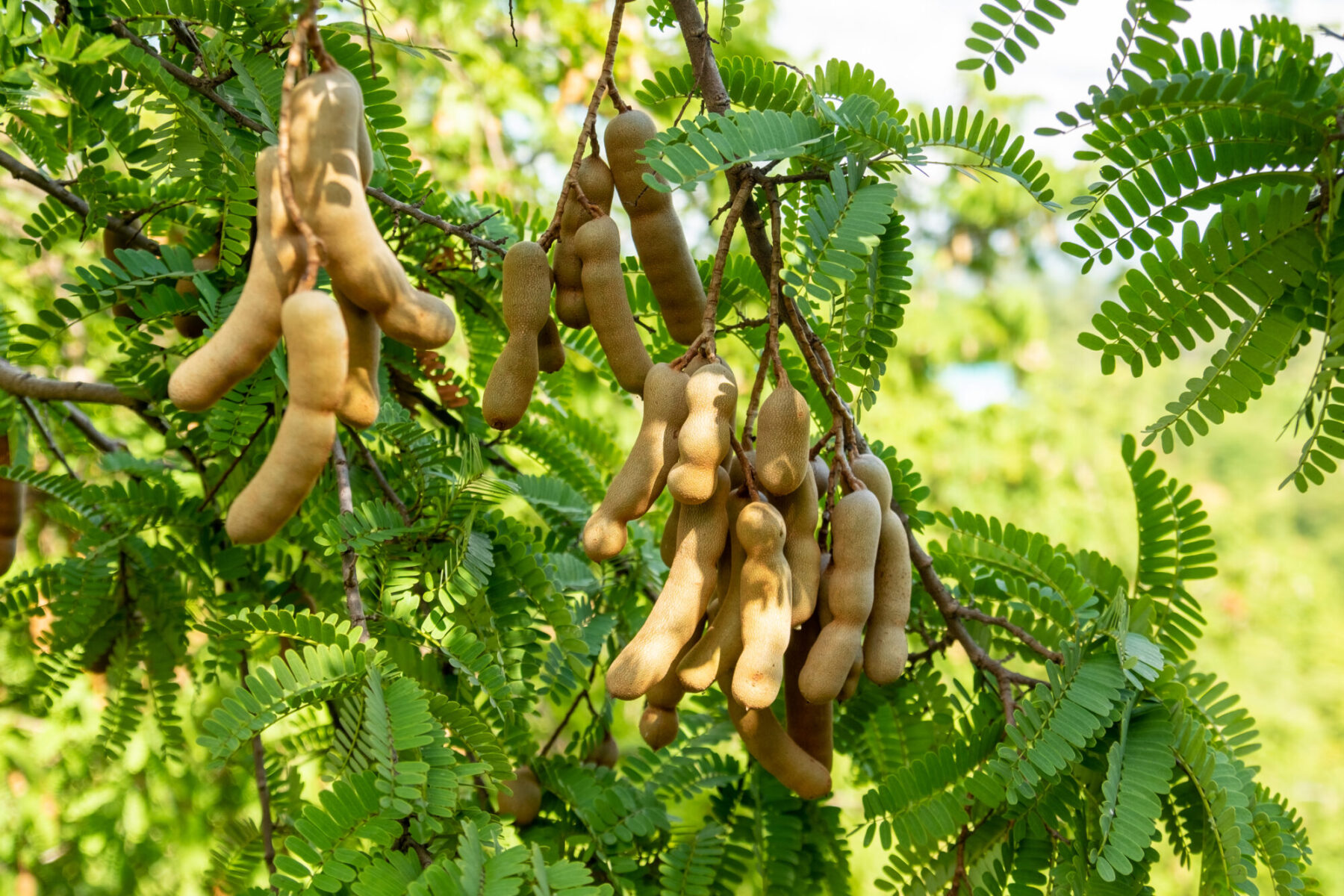
Centuries ago, tamarind travelled across the water, experiencing perils of the sea with Indian merchants and perhaps monks as fellow passengers. Suvarnabhumi, the “Land of Gold”, as ancient Southeast Asia was known, eventually became home to Tamarindus indica. Firmly ensconced within Southeast Asian shores, it’s hard to imagine that the asam tree had possibly set out from tropical Africa and been brought by Ethiopian traders to India before it continued east in search of new roots. This evergreen perennial of the Fabaceae legume family, rising to possibly 20 metres in height, is ubiquitous in Southeast Asia. It may be considered a herbal tree as it is a plant with leaves, flowers, roots, bark, fruit and seeds used for medicinal as well as culinary and other purposes.
Tamarindus is derived from the Arabic phrase tamr hindi, which refers to its fruit as the “Indian date”, although its origin is not Indian. Till today, tamr hindi is a refreshing healthy drink to break fast in parts of the Middle East during the sacred month of Ramadan. Researchers are finding that every part of the tamarind is a veritable pharmacopoeia. Found to be phytonutrient-rich, the pulp or flesh is asam (Malay for “acidic” or “sour”), having a sour-sweet taste without which various Southeast Asian dishes would be characterless. Phytonutrients found in plants have protective qualities, as well as antioxidant and anti-inflammatory qualities. Indeed, the overall amount of phenolic content found in tamarind flesh is greater than in other fruits like mango, jackfruit or even avocado.
USES
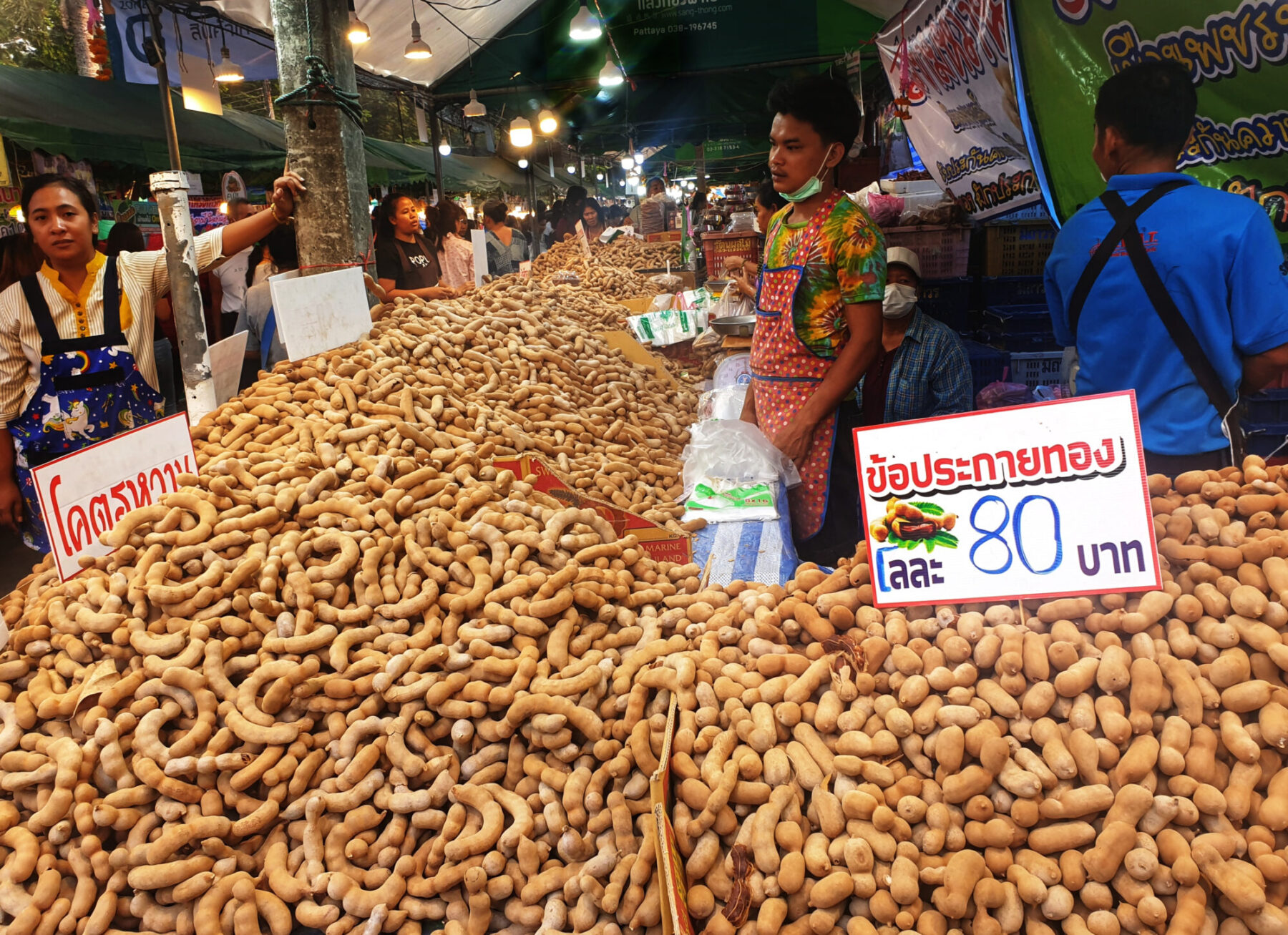
It has been noted that tamarind has laxative as well as tonic qualities and is used as such in Burmese traditional medicine. The tree is known as magyi, and no part of it is wasted; even its seed is not discarded. It is used for treating women’s infections, and the kernels, crushed into a paste, are effective against diarrhoea, dysentery, and even scorpion stings. The skin of mature seeds combined with sugar and cumin, and crushed into a powder, relieve dysentery.
The leaves are no less intriguing. Crushed to produce juice, they relieve certain urinary problems and alleviate prickly heat. A combination of sesame oil and cooked leaf juice stops earache. Eaten with another local seed, the leaves are effective as a natural deodorant. Finally, its roots and bark are invaluable, for the former treats urinary ailments, jaundice, and stomachaches while the latter is burnt, powdered, and mixed with water to alleviate digestive problems. A paste of water and bark will also relieve sore eyes and is claimed to cure venomous bites.
Laotian herbal remedies prescribe mak kham som for stomach issues, whereby the stem of tamarind is mixed with indigenous herbs. Cambodians use ampil leaf – heated and filtered tamarind leaf juice – for eye problems such as conjunctivitis. In the Philippines, a traditional cure for fever includes the use of tamarind sampalok leaves as a bath and the flesh as a laxative taken with lots of water. Its leaves, made as poultices, reduce swelling of the joints. As in Myanmar, the burnt bark ash of the sampalok is mixed with water and used for digestive issues. The bark is fried with salt till it powders and then mixed with water.
Sampalok flowers are used for conjunctivitis or bleeding haemorrhoids and drunk as tea. In Malaysia, infusions of asam flesh are thought to reduce fever while leaf poultices are also applied to joints to reduce swelling. Moreover, asam flowers are used to treat conjunctivitis. Daun asam, or tamarind leaves, are sometimes used to reduce fever as well.
Crossing over to Indonesia, Central Javans use the fruit, mixed with other herbs, for menstruation cramps, and the fruit on its own against fever. In West Java, the leaves and fruit act as a deodorant. The fruit cures flatulence and, when mixed with other herbs, reduces fever and body pain. In Bali, its fruit, blended with other herbs, is a cough remedy and even a remedy against flatulence. In West Sumatra, the Siberut islanders in the Mentawai Island group combine its fruit with other herbs to relieve stomach pain or postpartum issues.
7. VETIVER
HISTORY
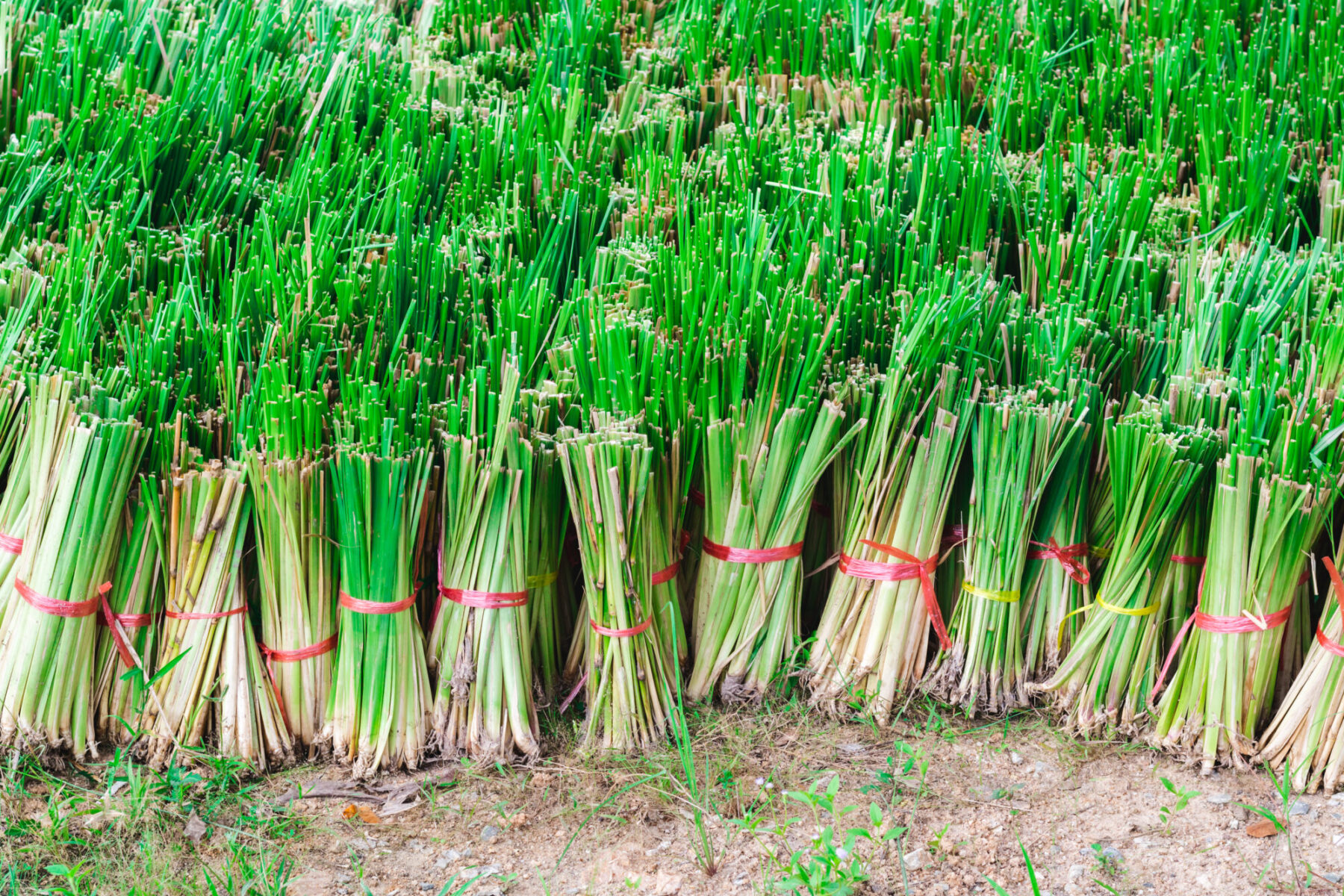
Lanvin’s Arpège, Nina Ricci’s L’Air du Temps, and Yves Saint Laurent’s Rive Gauche are but three timeless fragrances. What makes these scents timeless? A simple answer would be, “vetiver”! And who would have been more than overjoyed to know this than King Harshavardhana, who ruled northern India with his capital at Kannauj (now Uttar Pradesh) from 606–647 CE. He levied a tax on vetiver roots, a plant mentioned in Ayurvedic texts since 1000 BCE, shrewdly capitalising on its financial advantages and catapulting Kannauj to fame as the aromatic centre of the world. Traditional Indonesian preparations before a certain rite of passage, for instance, marriage or after giving birth, may involve a steam bath ritual in which vetiver is added.
USES
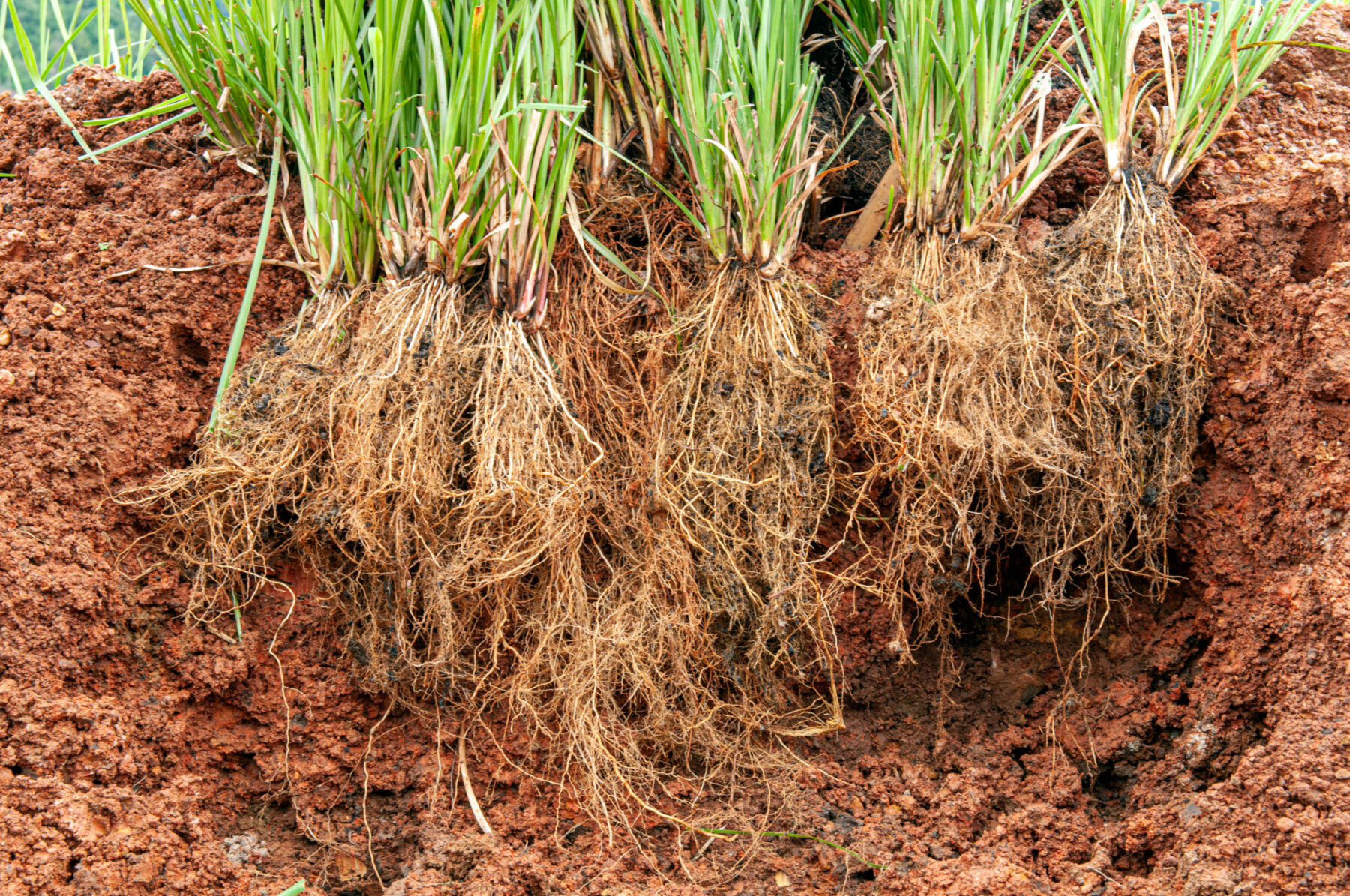
Originally from India, Chrysopogon zizanioides of the Poaceae family (known as vettiveru to the Tamils, and hence “vetiver” to the world), grows in tufts and looks somewhat like lemongrass. Its roots burrow up to four metres downwards, literally buried treasure that requires steam distillation to release the goodness of its essential oil. Used for scents, soaps, cosmetics, and even repellents, vetiver oil is a veritable fixture as a fixative and fragrance.
To get an idea of how essential oils are extracted through steam distillation, S. Irmak and O. Erbatur’s 2008 work, Environmentally Compatible Food Packaging, clearly explains the process: “[S]team is directed through the plant material. The mixture of hot vapours is collected and condensed to produce a liquid in which the oil and water form two distinct layers. One of these layers is essential oil, which contains oil-soluble compounds and the other is a hydrolysate or hydrosol, which contains water-soluble components.” It’s estimated that about 1,000 kilograms of roots should yield roughly 15 kilograms of essential oil.
Traditional medicine makes use of vetiver internally and externally. As a remedy for bad breath, practitioners prepare a drink made of clean and dried vetiver roots, where the concoction is boiled down and drunk daily. A remedy for arthritis and rheumatism consists of the application of akar wangi together with other herbs as a massage oil. It heals inflammation, cuts, wounds and acne. Useful as an antiseptic for weeping sores, it also has a sedative and strengthening effect on the nervous system and has been shown to successfully treat nervous tension, depression, and stress. A 2016 study showed that it could be beneficial to those suffering from attention deficit hyperactivity disorder, either through massage or oil diffusion, and help them to focus on specific tasks at hand. And apart from medical issues, its use as an insect repellent is well known – even against termites!
8. WILD PEPPER
HISTORY
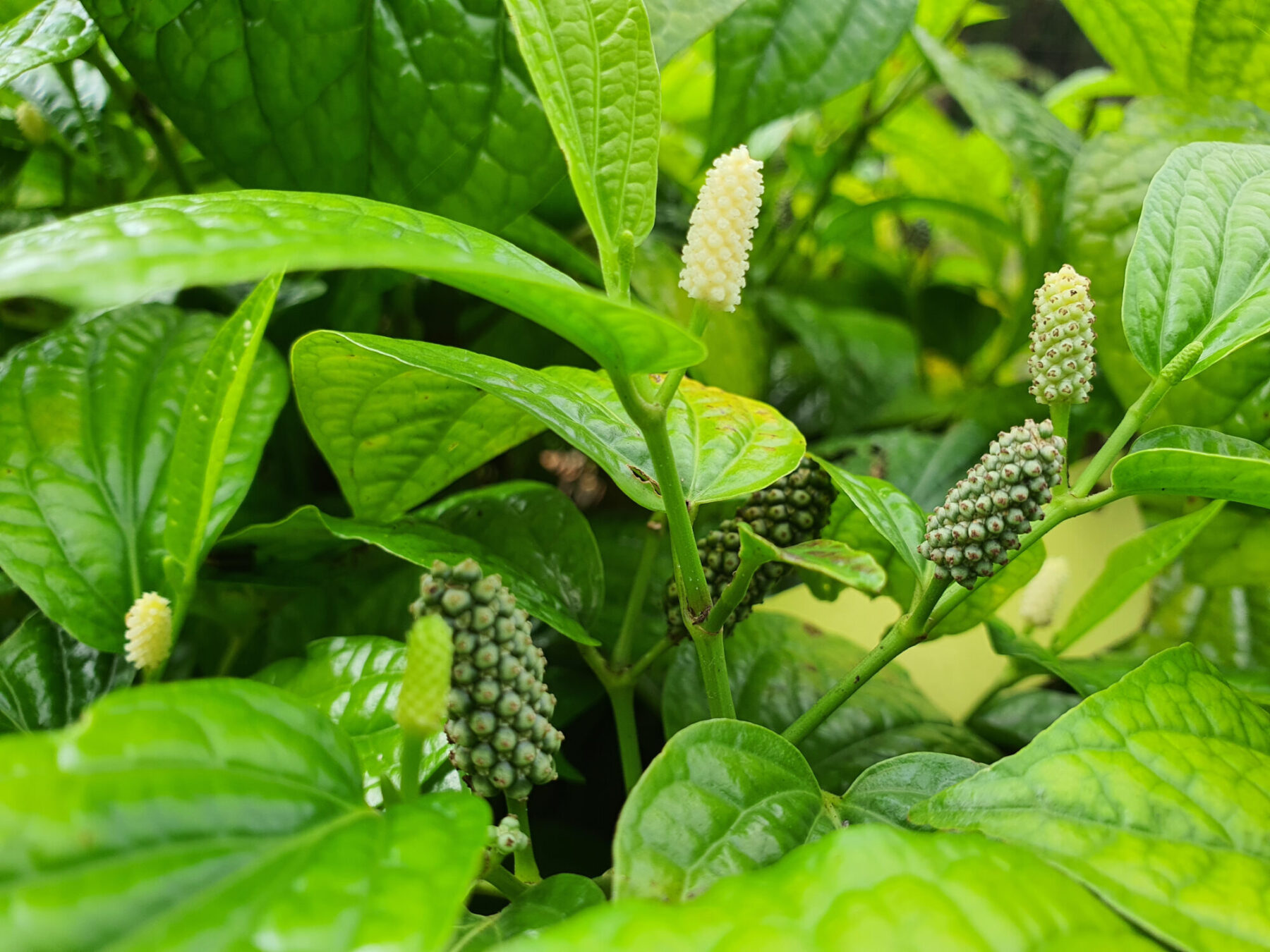
Like many famous Asian families, the Piperaceae family is well known in the region; intriguingly peppery, distinctive, occasionally a tad wild, but unique. That, in a nutshell, describes daun kaduk, a common, short name in the Malay world for Piper sarmentosum, often referred to as “wild pepper”.
This shrubby native of tropical Singapore, also growing in pockets of Southeast Asia, is a much-loved wild herb. Its finely-sliced leaves used in the rice salad dish nasi ulam is popular in the Malay world and Nyonya communities. Its raw shoots may be dipped in sambal, its flowers dried as a spice, and its leaves a fragrant wrap for fish or meat.
Daun kaduk are rich in bioactive and phenolic compounds. Bioactive compounds are molecules in plants that can promote good health, acting as antimicrobial agents or having antioxidant capability, providing more positive effects than simply nutrition. Phenolic compounds such as flavonoids present in daun kaduk also provide benefits, reducing the risk of certain diseases. Phenolic compounds are natural antioxidants also acting against inflammation or ageing and are important for the reduction of some chronic diseases, such as diabetes.
A 2003 study of daun kaduk showed that naringenin, a flavonoid obtained from leaf extracts, has an antioxidant activity of roughly 75 percent. Compounds in the fruit show some anti-tubercular activity and compounds from the plant exhibit antifungal activity against certain fungi. The plant’s benefits extend to antimalarial effects and anti-clotting action. Laboratory tests suggest that liquid extracts of the leaves seem to help the healing of fractures in cases where subjects are deficient in estrogen. Interestingly, extracts of Piper sarmentosum have also revealed antidepressive function. Further investigations are needed before this herb may be commercially exploited.
USES

In Malaysia, daun kaduk yields a whole host of remedies, shared across many parts of Southeast Asia. Traditional Malay medicine uses the leaves and the roots of Piper sarmentosum to alleviate headaches. The leaves may be pounded and used as a poultice for the same purpose, or used as a wash against foot fungal itch. When the plant is decocted, it is said to relieve weakness in muscles as well as bone pain. Decocted roots, as well as leaves mixed into food, are consumed to ease the passing of urine. Even kidney stones may be treated by crushing leaves in water. Decocted roots are also used for malaria and flu, while decocted leaves are used for fever. The flower relieves dyspepsia while the fruit and roots are helpful against dysentery.
Over in Indonesia, the roots continue to be extremely useful. When chewed with betel nut, the juice is swallowed to relieve coughs and asthma. A toothache may dissipate when the rootlets are chewed with ginger. Warmed, oiled leaves can reduce chest pain and rheumatism. Meanwhile, southern Thais treat diabetes with the entire plant (known as cha plu), which is used in a water mixture. It’s also used to dispel wind, as a cough remedy and against muscle pain. The fruit and leaves can also be used as a cough expectorant. A toothache may be treated by crushing the roots with salt. La lot, its Vietnamese name, not only wraps grilled meat parcels, but is also used medicinally for digestive issues and high blood pressure.
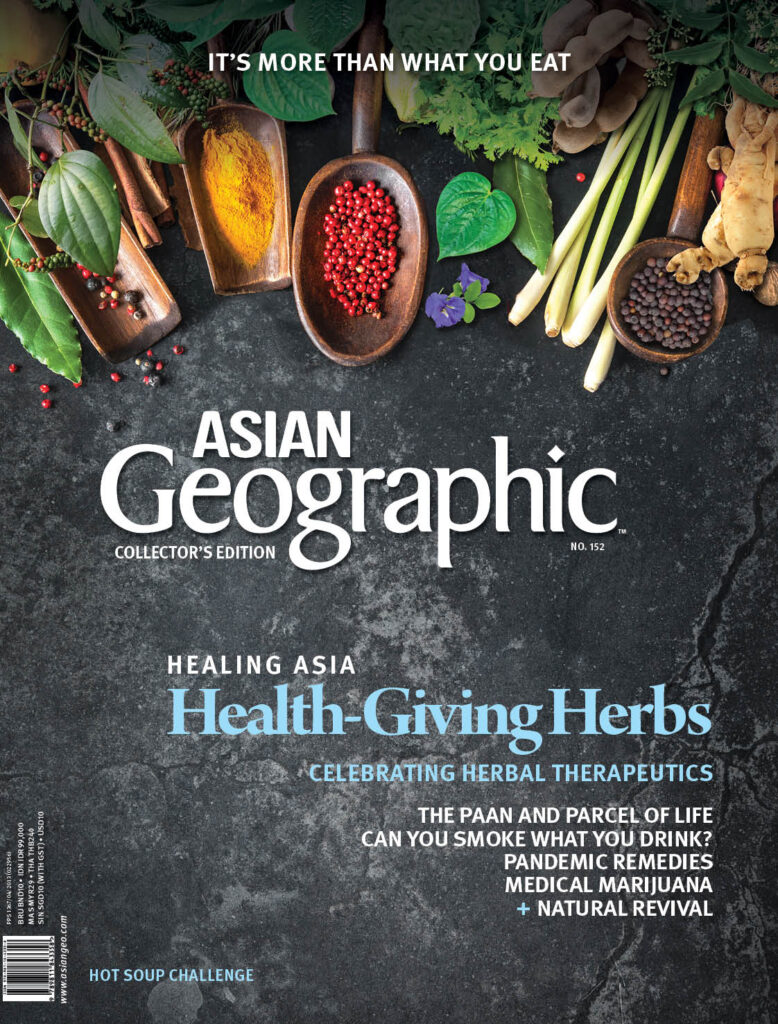 To learn even more fun facts about these Southeast Asian herbs, as well as discover the diverse properties and usages of numerous other herbs across Asia, get your copy of Asian Geographic Issue 1 / 2022 here.
To learn even more fun facts about these Southeast Asian herbs, as well as discover the diverse properties and usages of numerous other herbs across Asia, get your copy of Asian Geographic Issue 1 / 2022 here.
Subscribe to Asian Geographic Magazine here or for more details, please visit https://www.shop.asiangeo.com/.


